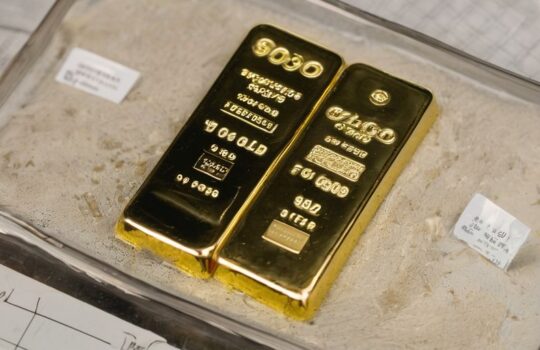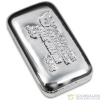The History of Gold and Silver Bullion as a Form of Wealth

Overview
Introduction to Gold and Silver Bullion
Gold and silver bullion are precious metals that have been used as a form of wealth for centuries. Bullion refers to gold or silver in its purest form, typically in the form of bars or coins. These metals have historical significance and are known for their enduring value. Gold and silver bullion have unique properties and characteristics that make them highly sought after by investors, collectors, and individuals. They are widely used in various industries, including investment and financial markets, industrial and technological applications, and jewelry and decorative arts. In this article, we will explore the history, rise, and modern applications of gold and silver bullion, as well as their future prospects and implications for investors and collectors.
Historical Significance of Gold and Silver Bullion
Gold and silver bullion have a long and rich history that spans thousands of years. Bars of gold and silver have been used as a form of wealth and currency since ancient times. In fact, gold and silver were among the first metals to be used by early civilizations for trade and commerce. The durability and scarcity of these precious metals made them highly valuable and sought after. They were often used to create intricate jewelry and decorative objects, showcasing the wealth and status of individuals and societies. Additionally, gold and silver bullion played a crucial role in the development of early monetary systems, providing a stable and reliable medium of exchange. Today, the historical significance of gold and silver bullion continues to be recognized, with these precious metals remaining popular as investments and store of value.
Properties and Characteristics of Gold and Silver Bullion
Gold and silver bullion have unique properties and characteristics that make them highly valuable and sought after. Gold is known for its lustrous yellow color and malleability, while silver has a shiny white appearance. Both metals are dense and heavy, with gold being one of the densest elements. Gold and silver bullion are also resistant to tarnish and corrosion, making them durable and long-lasting. Additionally, these precious metals have high conductivity, making them useful in various industrial applications. The demand for gold and silver bullion is driven by their scarcity and limited supply, as well as their historical significance as a form of wealth and store of value.
The Rise of Gold and Silver Bullion

Early Uses of Gold and Silver Bullion
Gold and silver bullion have a long history of being used for various purposes. In ancient civilizations, silver bullion was used as a form of currency and a medium of exchange. It was also used for making jewelry and decorative arts. Gold bullion, on the other hand, was highly valued for its rarity and beauty. It was used to create intricate jewelry pieces and adornments for royalty and the wealthy. Both gold and silver bullion have played a significant role in trade and commerce throughout history.
Gold and Silver Bullion in Ancient Civilizations
Gold and silver bullion played a significant role in ancient civilizations. These precious metals were highly valued for their rarity, durability, and beauty. Ancient civilizations used gold and silver bullion for various purposes, including trade, currency, and religious rituals. The craftsmanship of ancient civilizations in creating high-quality gold and silver bullion is still admired today. The ancient Egyptians were known for their exquisite gold jewelry, while the ancient Greeks used silver bullion for coinage. The Inca civilization in South America also had a rich tradition of working with gold and silver bullion. The use of gold and silver bullion in ancient civilizations showcases the enduring value and importance of these precious metals throughout history.
Gold and Silver Bullion in Medieval Times
During the medieval period, gold and silver bullion played a crucial role in the economy and society. Kings and nobles accumulated vast amounts of bullion as a symbol of wealth and power. Trade in bullion became increasingly important, with merchants and traders using it as a medium of exchange. The Guilds also played a significant role in the production and distribution of bullion. Additionally, gold and silver bullion were used for ornaments and religious artifacts. The demand for bullion continued to grow, leading to the establishment of minting and assaying systems to ensure the quality and authenticity of the precious metals. Investing in gold and silver bullion became a way for individuals to preserve and grow their wealth.
Modern Applications of Gold and Silver Bullion

Investment and Financial Markets
In the investment and financial markets, gold and silver bullion have long been recognized as valuable assets. Metalor gold bars are among the most sought-after forms of bullion for investors. These bars are known for their high purity and quality, making them a reliable choice for those looking to diversify their investment portfolio. Gold and silver bullion can provide a hedge against inflation and economic uncertainty, making them attractive to investors seeking stability. Additionally, gold and silver bullion can be easily bought and sold on the global market, providing liquidity and flexibility. Overall, gold and silver bullion play a crucial role in investment and financial markets, offering a tangible and enduring form of wealth.
Industrial and Technological Uses
Gold and silver bullion have a wide range of industrial and technological uses. These precious metals are highly valued for their unique properties, such as conductivity, resistance to corrosion, and malleability. In the industrial sector, gold and silver bullion are used in the production of electronic components, semiconductors, and solar panels. They are also essential in the manufacturing of catalysts, medical devices, and photographic materials. Furthermore, gold and silver bullion find applications in the field of aerospace, where they are used in the construction of satellites and spacecraft. Overall, the industrial and technological uses of gold and silver bullion play a crucial role in various sectors, making them highly sought after in the market.
Jewelry and Decorative Arts
Gold and silver bullion have long been used in the creation of jewelry and decorative arts. The shine and luster of gold and silver make them highly desirable materials for crafting exquisite pieces. From necklaces and bracelets to rings and earrings, gold and silver bullion add a touch of elegance and sophistication to any piece of jewelry. In addition, gold and silver bullion are often used in the creation of sculptures, statues, and ornaments, adding a sense of opulence and beauty to decorative arts. The use of gold and silver bullion in jewelry and decorative arts showcases their timeless appeal and enduring value.
Conclusion

The Enduring Value of Gold and Silver Bullion
Gold and silver bullion have long been recognized as a store of value throughout history. Their enduring value is attributed to various factors, including their scarcity, durability, and intrinsic worth. Geopolitical events can also influence the value of gold and silver bullion, as investors often turn to these precious metals during times of uncertainty. Additionally, gold and silver bullion have a global appeal, making them a preferred form of wealth in diverse cultures. The demand for gold and silver bullion remains strong, and their value is expected to continue to rise in the future.
Future Prospects for Gold and Silver Bullion
Gold and silver bullion have a promising future ahead. As the global economy becomes increasingly uncertain, investors are turning to precious metals as a safe haven. The demand for gold and silver bullion is expected to rise, especially among beginner’s guide investors who are looking to diversify their portfolios. Additionally, the industrial and technological uses of gold and silver are expanding, further driving the demand for bullion. With its enduring value and multiple applications, gold and silver bullion continue to be attractive investments for both individuals and institutions.
Implications for Investors and Collectors
Investors and collectors should consider the outlook for gold and silver bullion when making decisions. The outlook for gold and silver bullion is influenced by various factors such as economic conditions, geopolitical events, and market trends. It is important to stay informed about these factors and their potential impact on the value of gold and silver bullion. Additionally, investors and collectors should diversify their portfolios and consider the long-term outlook for gold and silver bullion as a store of value. By understanding the outlook, investors and collectors can make informed decisions and potentially benefit from the appreciation of gold and silver bullion.










